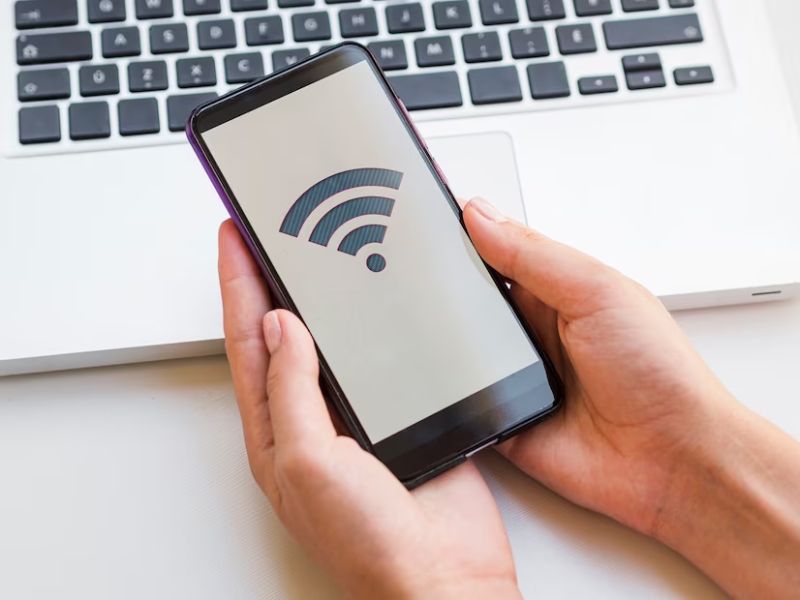
Hot spots are a convenient way to get internet access when you are away from a fixed connection. With a few simple steps, you can connect a hotspot to your laptop and get online.
Content of the page
If you have a problem with your hotspot connection from your laptop, you may want to read a guide to troubleshooting hostpot connection on laptop.
If you are trying to connect your laptop with a mobile phone hotspot, you may check our guide on that.
Understanding the Basics of Hotspot and Laptop Connection
To connect a hotspot to your laptop, you need to first have a compatible hotspot device, such as a mobile phone, tablet or other device that has a built-in hotspot capability. Your device must also be able to generate a Wi-Fi signal that your laptop can detect.
The process of connecting a hotspot to your laptop is relatively straightforward. You will need to enable the hotspot on your device and turn on Wi-Fi on your laptop. Once these two steps are complete, your laptop will be able to detect the hotspot and connect to it.
Step-by-Step Instructions for Connecting Hotspot to Laptop
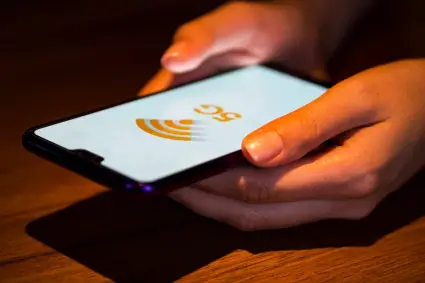
Step 1: Check Hotspot Availability
The first step in connecting a hotspot to your laptop is to make sure your device has a built-in hotspot capability and that the hotspot is enabled. On most devices, you can find this setting in the Settings menu.
Step 2: Enable Hotspot on Your Mobile Device
Once you have ensured that your device has a built-in hotspot capability, you can enable the hotspot. This process can vary depending on the type of device you are using, but generally, you will need to go to the Settings menu and look for the Wi-Fi and Hotspot section.
You will then need to enable the hotspot by tapping the toggle switch or selecting the “On” option. Once the hotspot is enabled, you will be able to see the Wi-Fi network name and password that are required to connect your laptop to the hotspot.
Step 3: Turn on Wi-Fi on Your Laptop
The next step is to turn on Wi-Fi on your laptop. This can usually be done by pressing the Wi-Fi button on your laptop, or by going to the Network and Sharing Center in the Control Panel and selecting the “Turn On Wi-Fi” option.
Step 4: Locate and Connect to the Hotspot
Once Wi-Fi is enabled on your laptop, you will be able to locate and connect to the hotspot. To do this, you will need to open the list of available Wi-Fi networks and select the hotspot you have enabled.
Once you have selected the hotspot, you will be prompted to enter the password. Once the password is entered, your laptop should be connected to the hotspot and you will be able to access the internet.
Conclusion
Connecting a hotspot to your laptop is a relatively simple process that can be completed in just a few steps. Once the process is complete, you will be able to access the internet wherever the hotspot is available.
Troubleshooting Common Issues in Hotspot-Laptop Connection
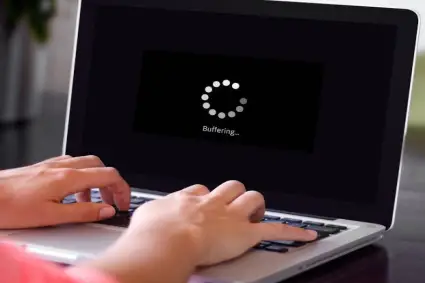
| Issue | Possible Solutions |
|---|---|
| Unable to Find the Hotspot |
|
| Authentication Problems |
|
| Slow or Unstable Connection |
|
If you’re having trouble connecting your laptop to a hotspot connection, there are a few common issues you can troubleshoot. First and foremost, make sure that the mobile hotspot is active and broadcasting a signal. If you’re having trouble locating the hotspot, make sure that you’re in range of it and that it hasn’t been turned off on the device. Once you’ve confirmed that the hotspot is active and broadcasting, you can troubleshoot the most common connection issues.
Issue 1: Unable to Find the Hotspot
If you’re having trouble finding the mobile hotspot on your laptop, the first step is to make sure that you’re in range of the hotspot signal. If you still can’t locate the hotspot, try restarting the device that the hotspot is being broadcast from. If you’re still having trouble, your laptop may need to be restarted as well. If you’re still unable to locate the hotspot after restarting both devices, make sure that the hotspot is enabled on the device. If all else fails, check to make sure that the device isn’t in airplane mode.
Issue 2: Authentication Problems
If your laptop is able to find the hotspot signal but is unable to authenticate, the issue may be with the hotspot password. Make sure that the password is entered correctly, as some passwords are case sensitive. If you’re still having trouble authenticating, try restarting the device that the hotspot is being broadcast from. If you’re still having trouble, your laptop may need to be restarted as well. If all else fails, check to make sure that the device isn’t in airplane mode.
Issue 3: Slow or Unstable Connection
If you’re having trouble with slow or unstable connection speeds, make sure that you’re not too far from the hotspot. If you’re still having trouble with slow or unstable connection speeds, try restarting the device that the hotspot is being broadcast from. If you’re still having trouble, your laptop may need to be restarted as well. If all else fails, check to make sure that the device isn’t in airplane mode.
Optimizing Hotspot Connection for Better Performance
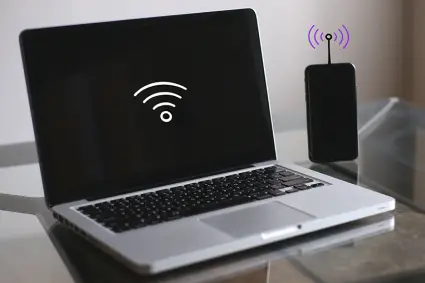
| Tip | Description |
|---|---|
| Positioning Your Laptop for Stronger Signal Reception | Place your laptop closer to the hotspot without any obstacles in between. |
| Managing Background Applications and Updates | Limit the number of running applications and updates to avoid bandwidth congestion. |
| Utilizing External Wi-Fi Antennas or Boosters | Consider investing in devices that enhance the hotspot signal strength. |
If you’re looking to get the most out of your hotspot connection, there are a few easy tips you can use to improve performance. From positioning your laptop for better signal reception to managing background applications, these tips can help boost your connection speeds and improve overall performance.
Tip 1: Positioning Your Laptop for Stronger Signal Reception
One of the easiest ways to improve your connection speed is to position your laptop in a spot where it can get a strong signal from the hotspot. The closer you are to the hotspot, the better the connection speed will be. If possible, position your laptop in a spot where there are no obstacles between the laptop and the hotspot. This will help ensure that you’re getting the best possible connection speed.
Tip 2: Managing Background Applications and Updates
Another way to improve your connection speed is to manage the applications and updates running in the background on your laptop. If you’re running multiple applications and updates at the same time, they can take up a lot of bandwidth and slow down your connection speeds. To get the most out of your connection, try to limit the number of applications and updates running at any one time.
Tip 3: Utilizing External Wi-Fi Antennas or Boosters
If you’re looking for an even bigger boost in connection speed, you may want to consider investing in an external Wi-Fi antenna or booster. These devices are designed to boost the signal from the hotspot, allowing you to get faster connection speeds. While these devices can be a bit pricey, they can be a great way to get the most out of your connection.
Alternative Methods to Connect Laptop to the Internet
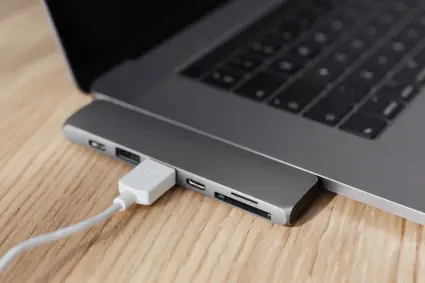
| Method | Description |
|---|---|
| Using a Physical Ethernet Connection | Connect your laptop to a router using an ethernet cable. |
| Connecting to Wi-Fi Networks | Access Wi-Fi networks by connecting to a router with the correct password. |
| Using USB Tethering | Establish an internet connection by connecting your laptop to a smartphone via USB cable. |
In addition to connecting your laptop to a mobile hotspot, there are a few other ways to get your laptop connected to the internet. From using a physical ethernet connection to connecting to Wi-Fi networks, here are a few alternative methods to connect your laptop to the internet.
Method 1: Using a Physical Ethernet Connection
If you’re looking for a reliable and fast connection, a physical ethernet connection is one of the best ways to go. To use a physical ethernet connection, all you need is an ethernet cable and a router. Simply connect the ethernet cable to the router and your laptop, and you’re good to go.
Method 2: Connecting to Wi-Fi Networks
If you don’t have an ethernet cable handy, you can also connect to Wi-Fi networks. Most modern laptops come with Wi-Fi capabilities, so all you need is a router and a password to get connected. Once you’ve entered the password, you should be good to go.
Method 3: Using USB Tethering
If you don’t have access to a Wi-Fi network or an ethernet cable, you can also use USB tethering to connect your laptop to the internet. To do this, you’ll need to connect your laptop to your smartphone using a USB cable. Once you’ve connected the devices, you should be able to access the internet on your laptop.
Conclusion
Connecting your laptop to a mobile hotspot is a great way to get connected to the internet. However, if you’re having trouble connecting or getting a reliable connection, there are a few troubleshooting steps you can take. You can also optimize your connection for better performance by positioning your laptop for a stronger signal, managing background applications and updates, and utilizing external Wi-Fi antennas or boosters. Additionally, there are a few alternative methods you can use to get your laptop connected to the internet, such as using a physical ethernet connection, connecting to Wi-Fi networks, and using USB tethering.
